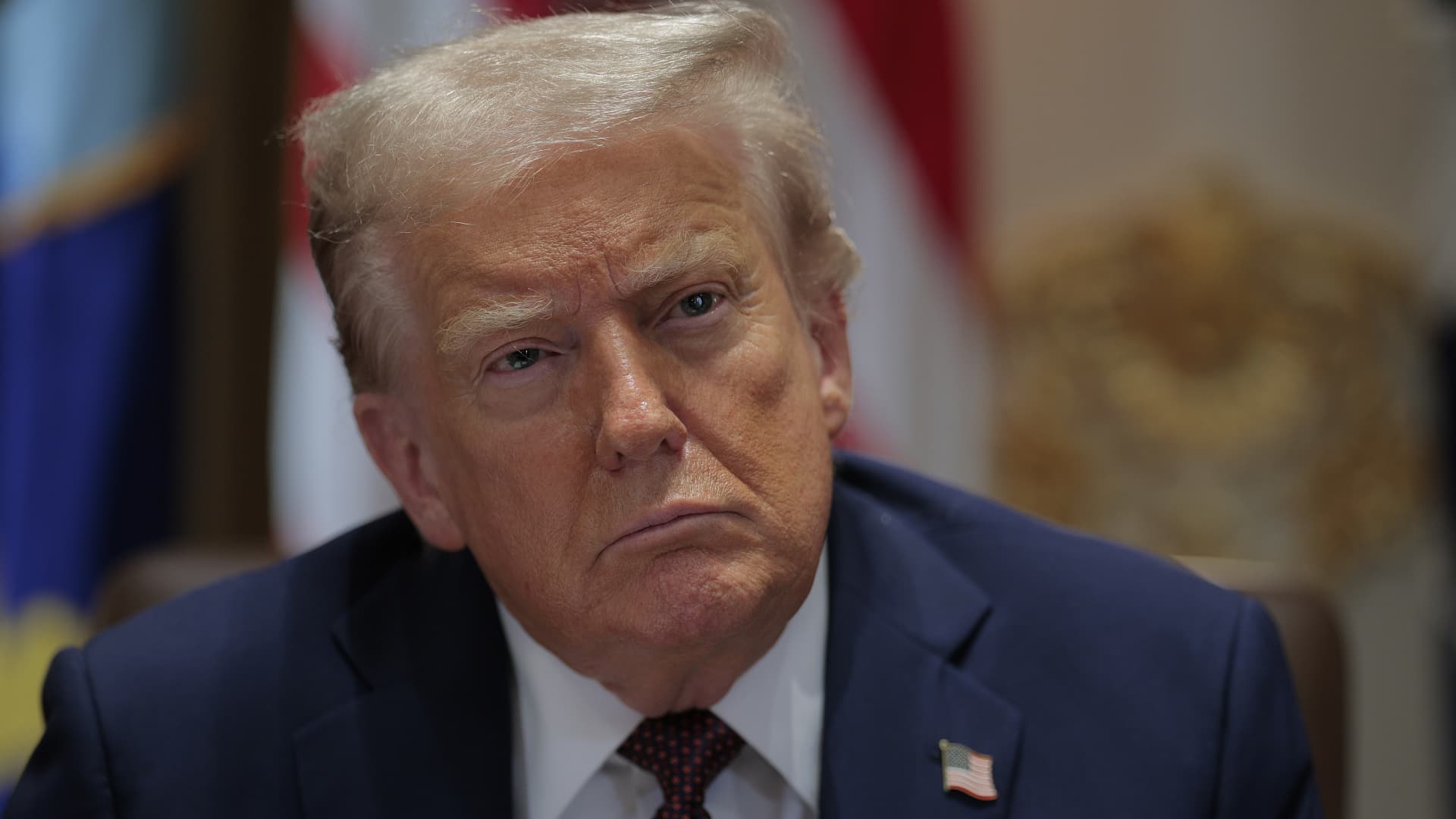U.S. President Donald Trump in the Cabinet Room of the White House on Aug. 26, 2025 in Washington, D.C.
Chip Somodevilla | Getty Images
It’s starting to feel like we’re in a game of Pac-Man, in which the U.S. government is the eponymous hungry yellow blob furiously chomping on everything in sight.
The White House’s 10% stake in Intel and revenue-sharing agreement with Nvidia and AMD look like they’re just the start in a series of deals, as President Donald Trump promised. On Tuesday, Commerce Secretary Howard Lutnick told CNBC that the Pentagon is having “a monstrous discussion” over whether to acquire equity stakes in firms such as Lockheed Martin.
Likewise, Trump’s early assaults on Federal Reserve Chair Jerome Powell turned out to be just his opening salvo on the central bank. On Monday night stateside, the U.S. leader terminated Lisa Cook, a Fed governor, over allegations of mortgage fraud. The next day, at a Cabinet meeting, Trump said he will “have a majority” of his nominees at the Fed, “so that’ll be great.”
Prior to Trump’s inauguration, analysts were upbeat about a looser regulatory environment that could facilitate more mergers and acquisitions. They probably weren’t thinking about the White House being the main deal-maker.
What you need to know today
And finally…
The Shanghai Stock Exchange on April 25, 2025.
Hector Retamal | Afp | Getty Images
China’s stock market looks to shake off casino vibes
About a decade ago, China’s retail investors sought annual returns of 30% to 50%, dismissing single-digit gains, said Jin Xin, author of a Chinese investment book. By contrast, the S&P 500 and Dow Jones Industrial Average have delivered less than 15% annualized returns over the past decade.
But mainland Chinese investors have matured since then. Various crises wiped out many portfolios. Now, investors in China are less likely to chase single-stock stories, while holding shares longer and aiming for steady 5% to 10% returns, Jin said.
— Evelyn Cheng





